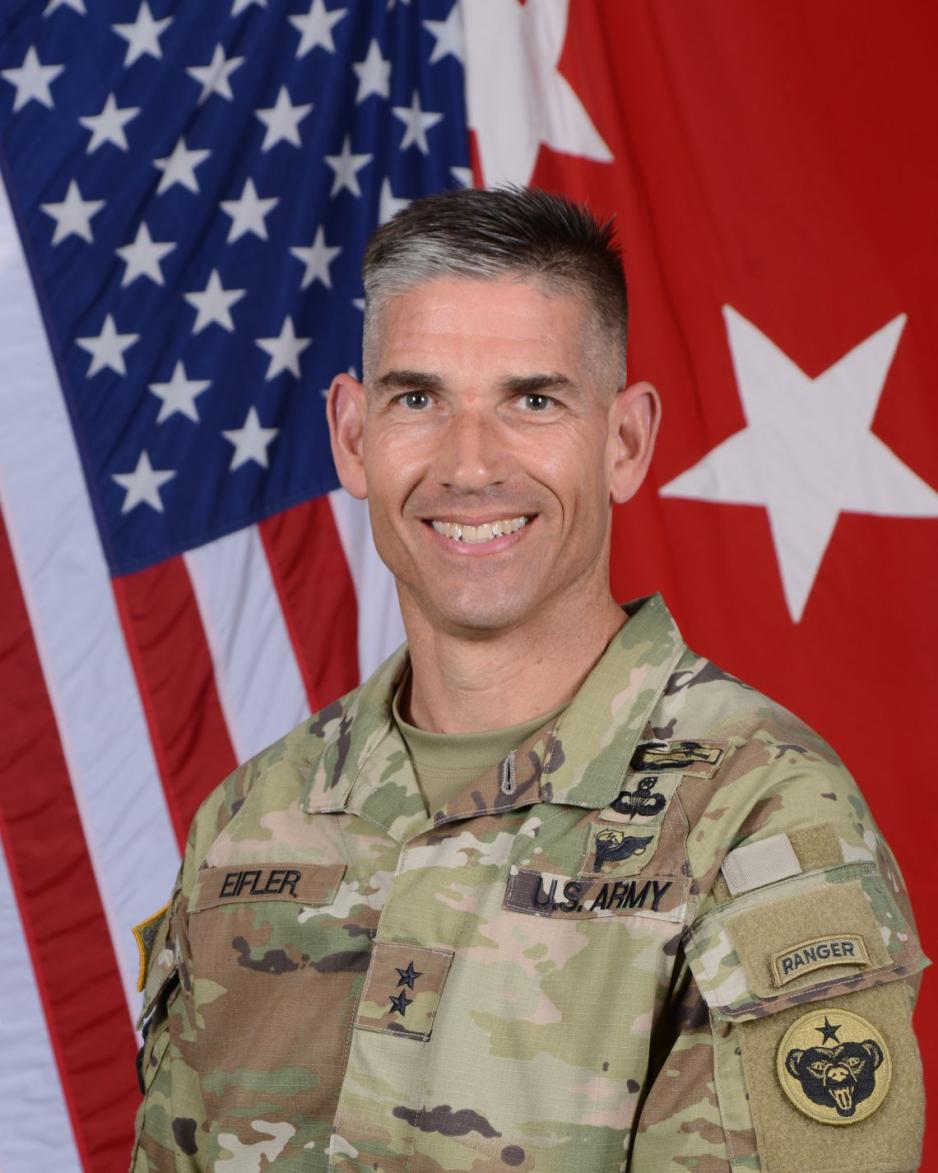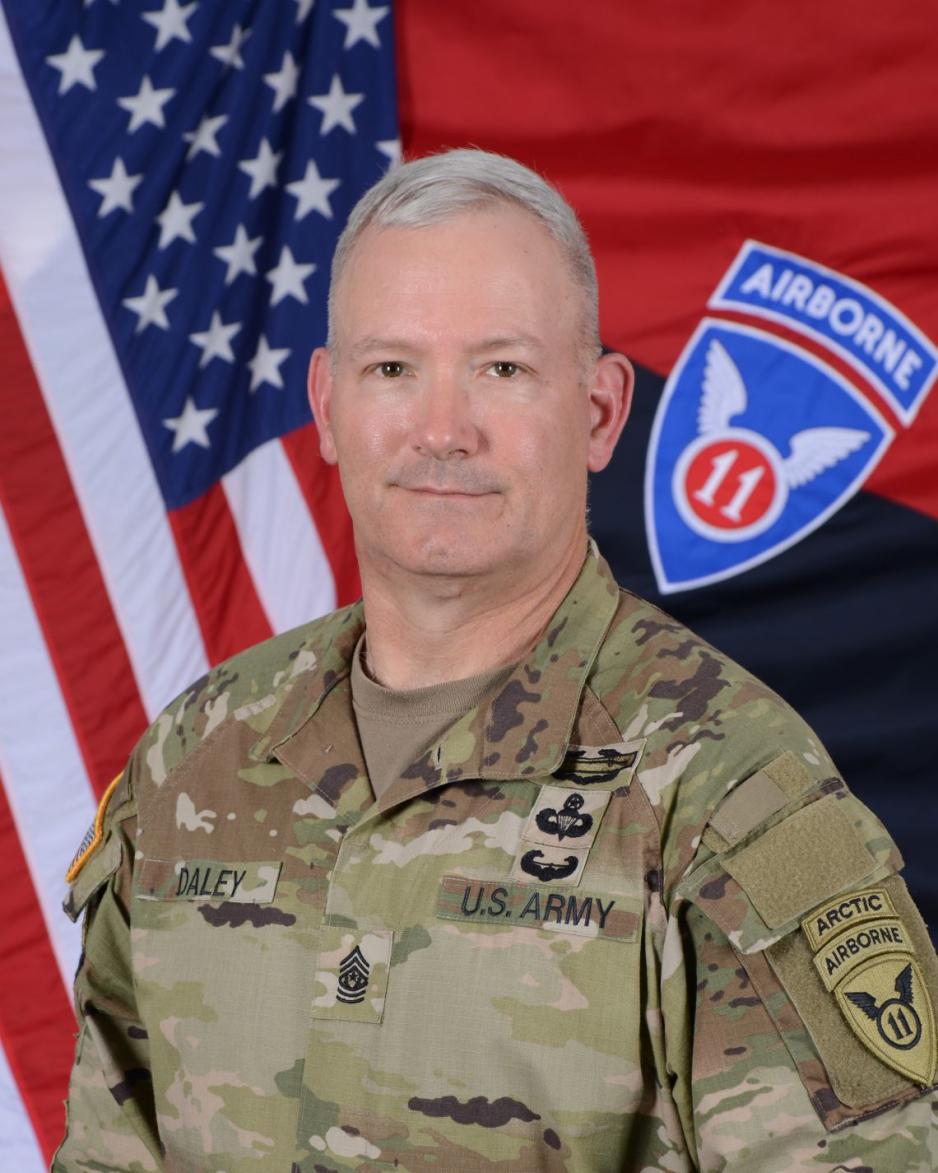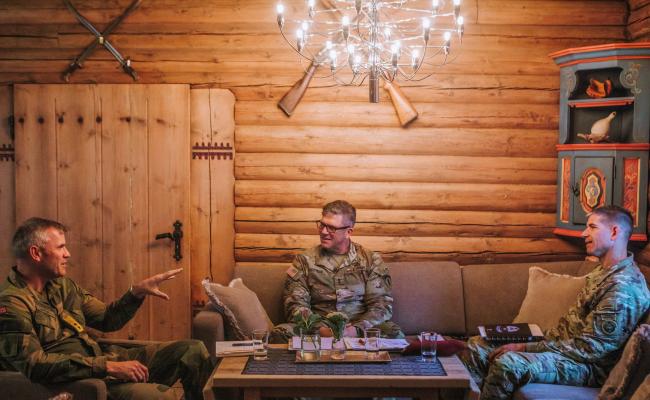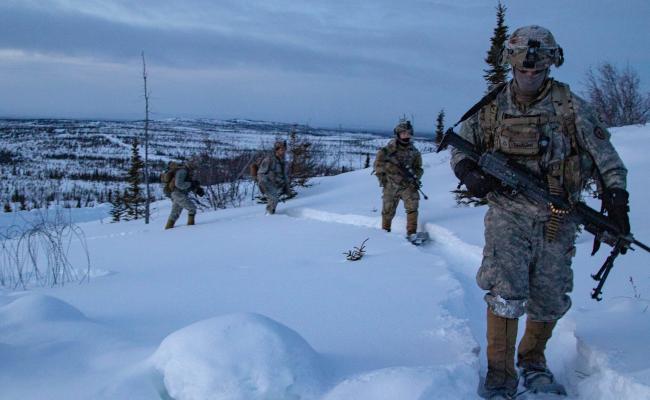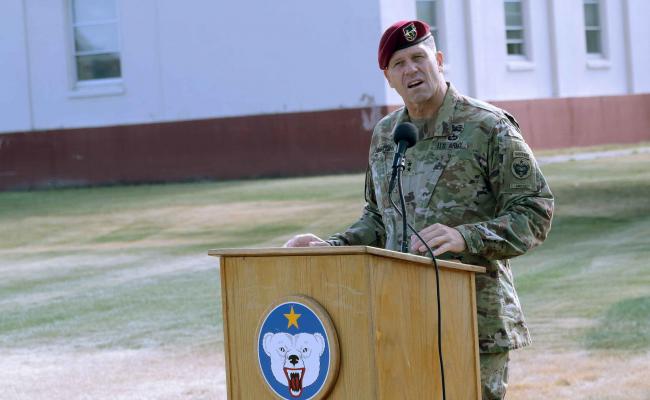Regaining Arctic Expertise: US Troops in Alaska Making Strides to Become the Army's Arctic Force

Next month, troops from the 11th Airborne Division in Alaska will train with Norwegian forces in Northern Norway, U.S. Army Major General Brian Eifler, Commanding General of the 11th Airborne Division, tells HNN. Here, he assists with gear during a recent military exercise in Alaska. (Photo: U.S. Army / Pfc. Brandon Vasquez).
The 11th Airborne Division recently concluded one of Alaska's coldest and biggest exercises yet. Soon, some 150 troops will conduct an over-the-pole movement from Alaska to Norway for the exercise Arctic Shock. "It is very important for us that we continue our partnerships," Commanding General Eifler says.
Over the last three years, the Alaska-based 11th Airborne Divsion has worked to regained unique Arctic expertise and knowledge that was partly lost in the years past from focusing elsewhere, Major General Brian Eifler, Commanding General of the 11th Airborne Division, tells High North News.
HNN has spoken to the leadership of the division about the strides that are being made in the US Army's Arctic force.
"We have been working together with countries like Norway, Canada, Finland and Sweden in exercises to get better, both at fighting and working interopably with our allies and partners to accomplish any mission in this environment. And it is a hard environment," Eifler continues.
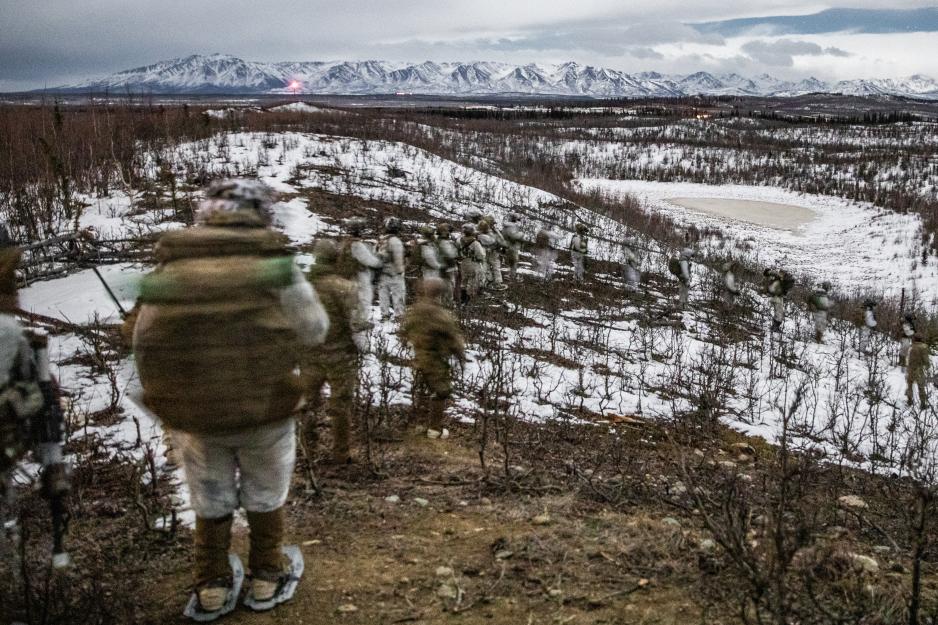
U.S. Soldiers, assigned to 1st Battalion, 5th Infantry Regiment, 1st Infantry Brigade Combat Team, 11th Airborne Division, move down a slope for a night troop movement at the Donnelly Training Area, Alaska. (Photo: U.S. Army photo / Pfc. Elijah Magaña).
Regaining Arctic expertise
As the US focus on the Arctic, and engagement in the region, increased, the US Army reactivated the 11th Airborne Division in 2022. The former US Army Alaska headquarters was then redesignated as the 11th Airborne Division.
As such, there has been a pivot in the US Army to train and operate more in Alaska to rebuild skills, but also to work with allies and partners in this process.

U.S. Army Command Sgt. Maj. Vern B. Daley followed by Maj. Gen. Brian Eifler observe U.S. Army paratroopers of the 2nd Brigade Combat Team, 11th Airborne Division as they prepare for an airdrop from a C-17 Globemaster III at Joint Base Elmendorf-Richardson, Alaska. (U.S. Air Force photo by Airman 1st Class Johnny Diaz).
The importance of partnerships
Commanding General Eifler points out that the military exercises, whether they are in Alaska or in Scandinavia, are important for the partnerships and the Arctic Strategy's interoperability aspect.
And moving forward, troops from the division will soon be participating in military exercises both in Norway and Sweden.
"It is very important for us that we continue our partnerships. I value the friendships of the three Army chiefs in Norway, Sweden, and Finland, and we continue to work together to get better."
"We have a really good understanding of what we need to do in crisis or conflict. And we continue to prepare. We always have to be participating and working together with other Arctic nations so we can deter any threat from doing anything that would be out of the ordinary. That is what we have to do. The more we work together and demonstrate our capability, the more deterrence we can present," he says.
We have made significant strides each year as we continue to build our capacity.
Over-the-pole movement
In mid-March, some 150 airborne troops from the division will fly over the North Pole and parachute onto a frozen lake in Bardufoss, Northern Norway. This is part of the "Arctic Shock" military exercise, where the troops will work with Norwegian forces and do field training exercises focused on cold-weather capabilities.
HNN spoke to the 11th Airborne Division's leadership back in 2022 when US paratroopers from Alaska trained in Northern Norway for the first time.
"We have made significant strides each year since then – as we continue to build our capacity. In March, we will see a great demonstration of that," Command Sergeant Major Vern B. Daley tells HNN, with referance to the upcoming exercise in Northern Norway.
"It comes down to our commitment and ability to reinforce and work with Norway to be able to provide deterrence. We have come a long way here in 11th, and we value our great partnerships," he adds.
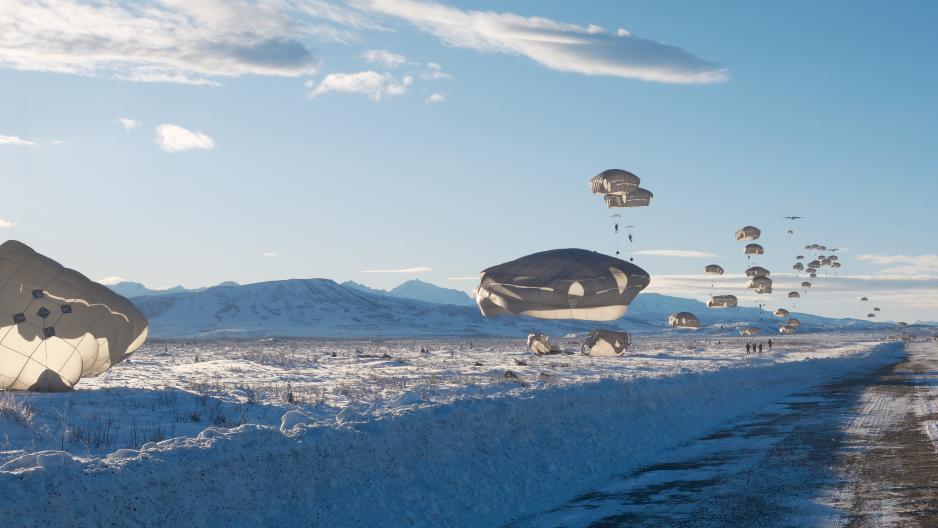
U.S. Army paratroopers from 3rd Battalion, 509th Parachute Infantry Regiment, 2nd Infantry Brigade Combat Team (Airborne), 11th Airborne Division, descent onto Donnelly Drop Zone as part of Joint Pacific Multinational Readiness Center 24-02. (Photo: U.S. Army Photo / Sgt. 1st Class Michael Sword, 11th Airborne Division Public Affairs).
Training across Alaska
The 11th Airborne Division has also recently concluded its regional large-scale military exercise in freezing temperatures across the state of Alaska, with nearly 10,000 troops in the field.
This is the third iteration of the Joint Pacific Multinational Readiness Center in Alaska – and the largest yet. Nearly the full division has been involved in the exercise, with 18 nations observing and forces from Canada, Australia, and Mongolia participating.
Joint Pacific Multinational Readiness Center 24-02
A two-week exercise in Arctic-like conditions
Builds readiness and enhances interoperability through realistic training within the Arctic Circle
"We have had some extreme weather here," Major General Eifler continues. "We have had temperatures ranging from minus 40 Fahrenheit to plus 40 Fahrenheit. It has been quite the swing in temperatures in Alaska for our troops to overcome," Major General Eifler says and continues:
"Cold temperatures can make the equipment not work as well as designed, especially down to minus 40 degrees. Many things in society are not made to function at that level. A lot of things like rubber and plastic easily break and crack. Our soldiers have to come up with innovation and be determined to overcome the obstacles – which they do."
Unique training operations
The Commanding General says the exercise covered areas of the state from the south to the north. However, most of the training has been conducted in the center, at the Donnelly Training Area.
This is one of the largest training areas in the whole of the United States, with 655,191 acres available for training.
Main exercise events included a large airborne operation to deploy two battalions, serving as the enemy force, into the training area, Eifler explains.
"Then our forces did a deep helicopter attack about a hundred miles and eventually did a deep attack on the enemy. "This was followed with another brigade air-assault helicopter infiltration of our soldiers about 80 miles".
These were large operations that the force had been practicing recently – and were also unique to the exercise, he says.
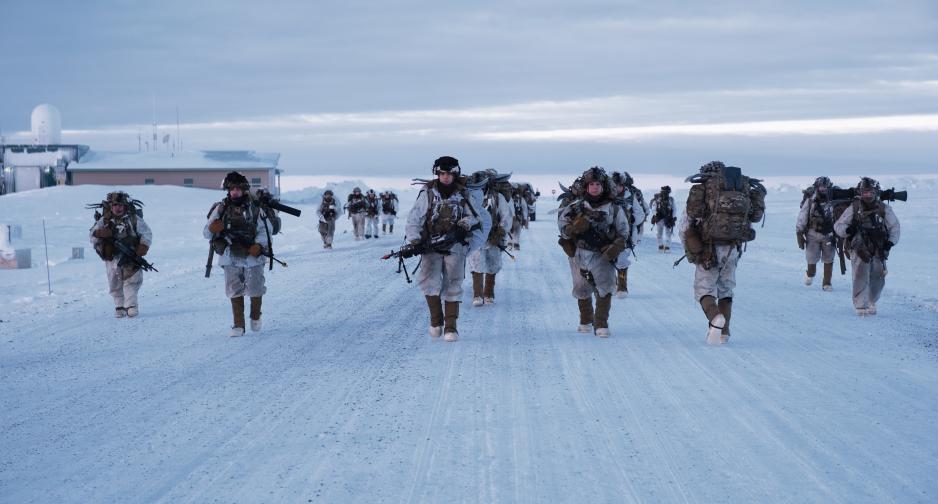
U.S. Soldiers assigned to 1st Infantry Brigade Combat Team, 11th Airborne Division, conduct training move in Utqiagvik, Alaska, as part of Joint Pacific Multinational Readiness Training Center 24-02. Utqiagvik (formerly known as Barrow) is the northermost city in the US. (Photo: U.S. Army Photo by Pfc. Brandon Vasquez).
Training in one of the world's northernmost cities
The exercise also consisted of an out-of-sector mission up into the city of Utqiagvik, which lies on the northern tip of Alaska.
"This is about 570 miles north of where we are training, deep into the Arctic Circle. It's quite a stretch, all the way from Anchorage to Fairbanks and up to Utqiagvik," the Major General says and concludes:
"It pushed our limits on what we can do tactically and distance-wise."
Arctic Shock 24
Arctic Shock is a combined U.S. and Norwegian exercise supporting the National Arctic Strategy that enhances multi-combatant command relationships, airborne interoperability, and Arctic capabilities.
The exercise takes place in March in Bardufoss, Norway, with around 150 U.S. Soldiers from the 11th Airborne Division and around 100 soldiers from the Norwegian Armed Forces participating.
The exercise consists of an over-the-pole movement from Alaska to Norway, an airborne jump, and a field training exercise focused on cold-weather capabilities demonstrating the U.S. commitment to defend the High North.
Source: US Army Europe and Africa
The 11th Airborne Divison
A US Army airborne formation based in Alaska.
Frequently termed the US Army's Arctic force.
The 11th Airborne Division was activated in June 2022, when the US Army Alaska headquarters was redesignated as the 11th Airborne Division.
It executes expeditionary operations within the Indo-Pacific theater and conducts Multi-Domain Operations in the Arctic.
The 11th Airborne Division was historically activated in February 1943, during World War II, and eventually inactivated in July 1965.


